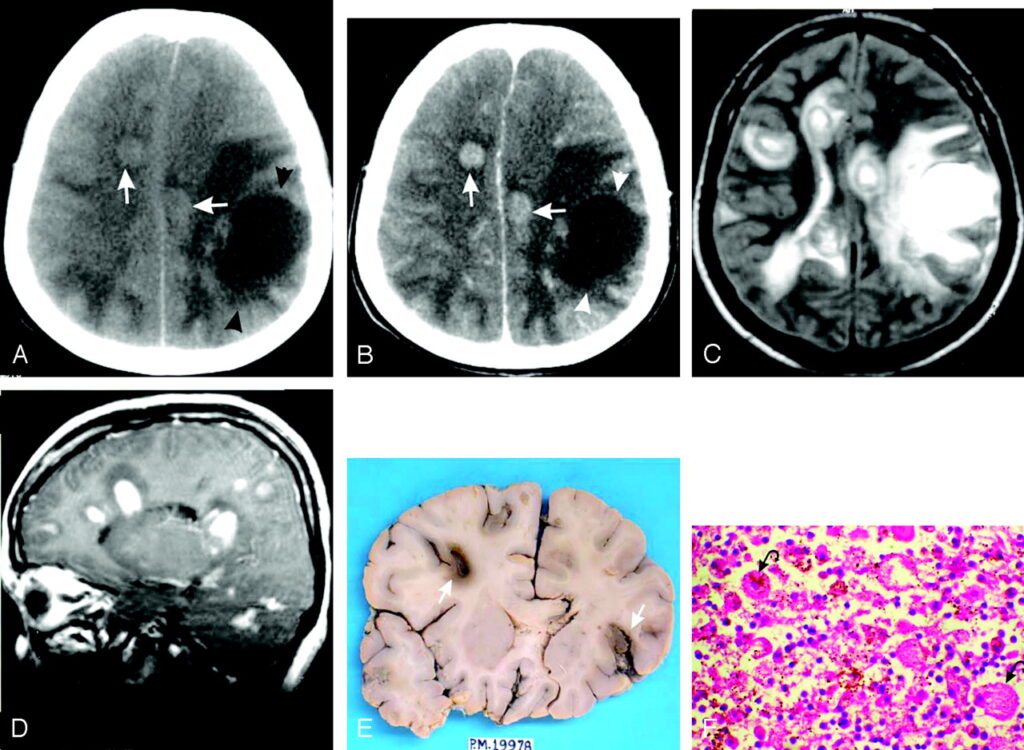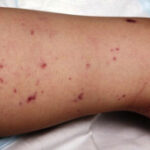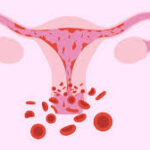Meningoencephalitis due to Naegleria fowleri is a rare and often fatal brain infection known as Primary Amebic Meningoencephalitis (PAM). Naegleria fowleri is a free-living amoeba found in warm freshwater bodies. It enters the human body through the nasal passages and migrates to the brain, causing severe inflammation and destruction of brain tissue. Understanding this condition is essential for early diagnosis and treatment, as survival rates are extremely low.

What is Naegleria fowleri?
Naegleria fowleri is a thermophilic amoeba commonly found in:
- Warm freshwater lakes, rivers, and hot springs
- Poorly maintained swimming pools
- Soil and geothermal water sources
This amoeba thrives in temperatures above 30°C and can survive brief exposure to higher temperatures. However, it does not survive in saltwater.
How Does Infection Occur?
Infection occurs when contaminated water enters the nose, allowing the amoeba to travel along the olfactory nerve to the brain. This process leads to inflammation and necrosis of brain tissue. Importantly, Naegleria fowleri infection does not occur through drinking contaminated water.
Symptoms of Meningoencephalitis Due to Naegleria fowleri
Symptoms typically begin 1 to 9 days after exposure and progress rapidly. Initial symptoms include:
- Severe headache
- Fever
- Nausea and vomiting
- Stiff neck
- Altered mental status
- Confusion and hallucinations
- Seizures
- Coma
Due to the rapid disease progression, early diagnosis is crucial.
Diagnosis
Diagnosing PAM is challenging as initial symptoms mimic bacterial or viral meningitis. The following tests can confirm Naegleria fowleri infection:
- Lumbar puncture (CSF analysis): Elevated white blood cell count, low glucose, and high protein levels suggest inflammation.
- Microscopic examination: Identifying motile trophozoites in cerebrospinal fluid (CSF) is key.
- PCR Testing: Detects Naegleria fowleri DNA in CSF.
- MRI and CT Scans: Reveal brain swelling and inflammation.
Treatment Options
Effective treatment is difficult due to the rapid progression of the disease. However, the following medications have shown some success:
- Amphotericin B: Primary drug used to kill Naegleria fowleri
- Miltefosine: An experimental anti-amoebic drug
- Rifampin, Fluconazole, Azithromycin: Used in combination therapy
- Therapeutic Hypothermia: Reduces brain swelling and inflammation
Despite aggressive treatment, the mortality rate remains over 97%.
Prevention Measures
Preventing Naegleria fowleri infection requires avoiding nasal exposure to contaminated water. Key preventive steps include:
- Avoid swimming or diving in warm freshwater lakes and hot springs.
- Use nose clips when swimming in potentially contaminated water.
- Avoid nasal irrigation with untreated tap water.
- Properly chlorinate and maintain swimming pools and hot tubs.
Meningoencephalitis due to Naegleria fowleri is a rare but devastating condition with a high mortality rate. Early diagnosis and aggressive treatment are critical to improving survival chances. Preventative measures such as avoiding warm freshwater exposure and proper chlorination of recreational water sources are essential in reducing infection risk.

